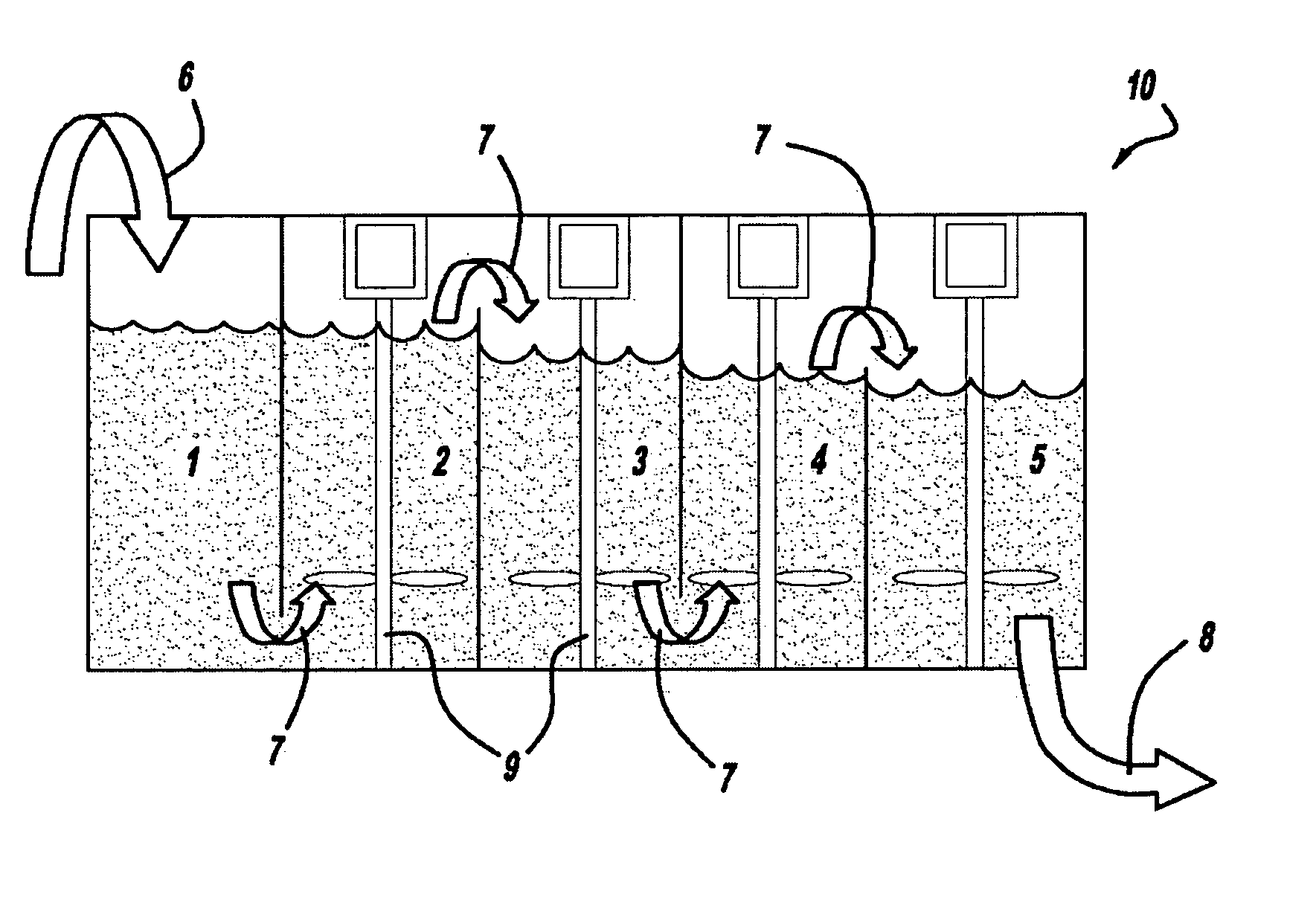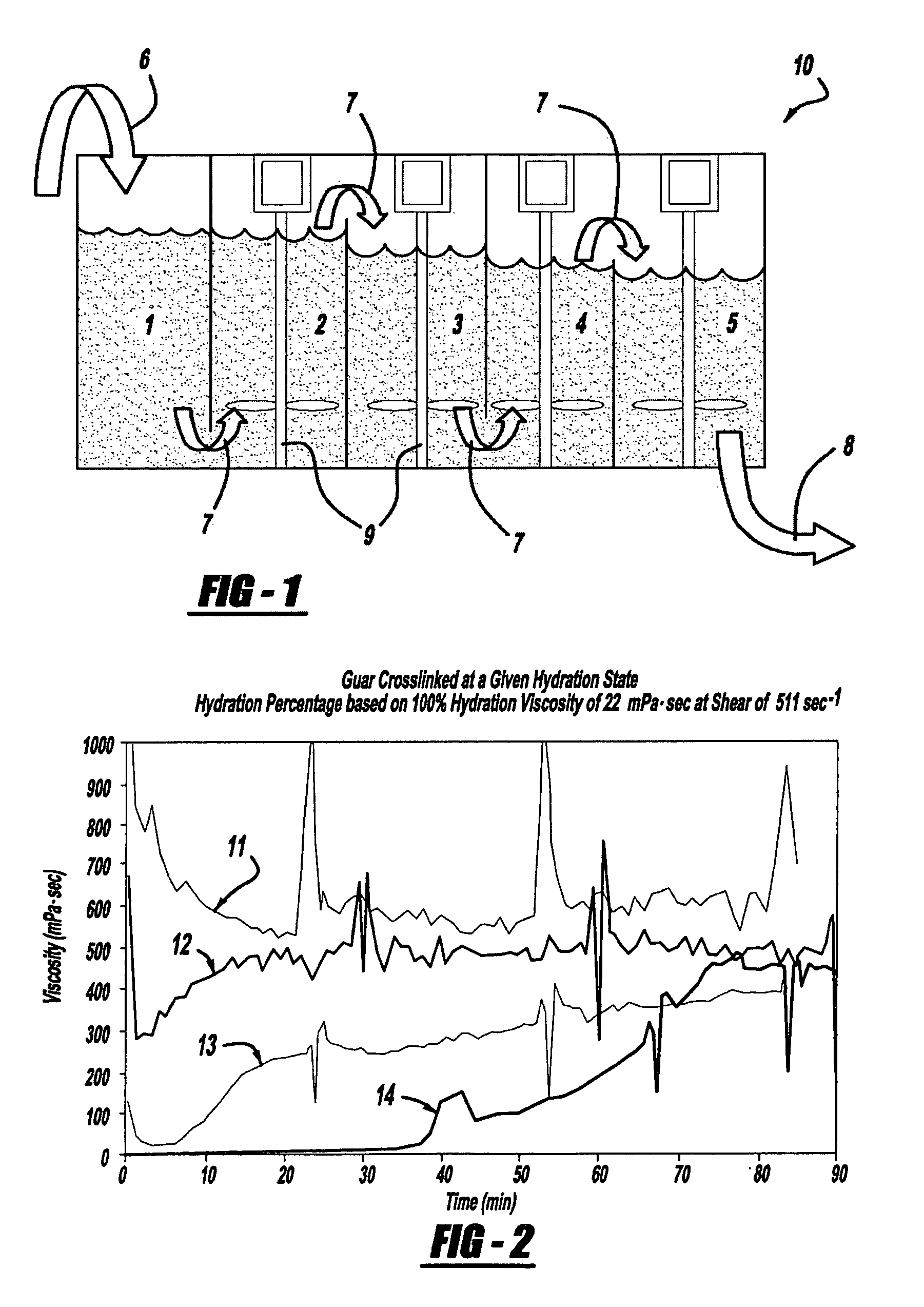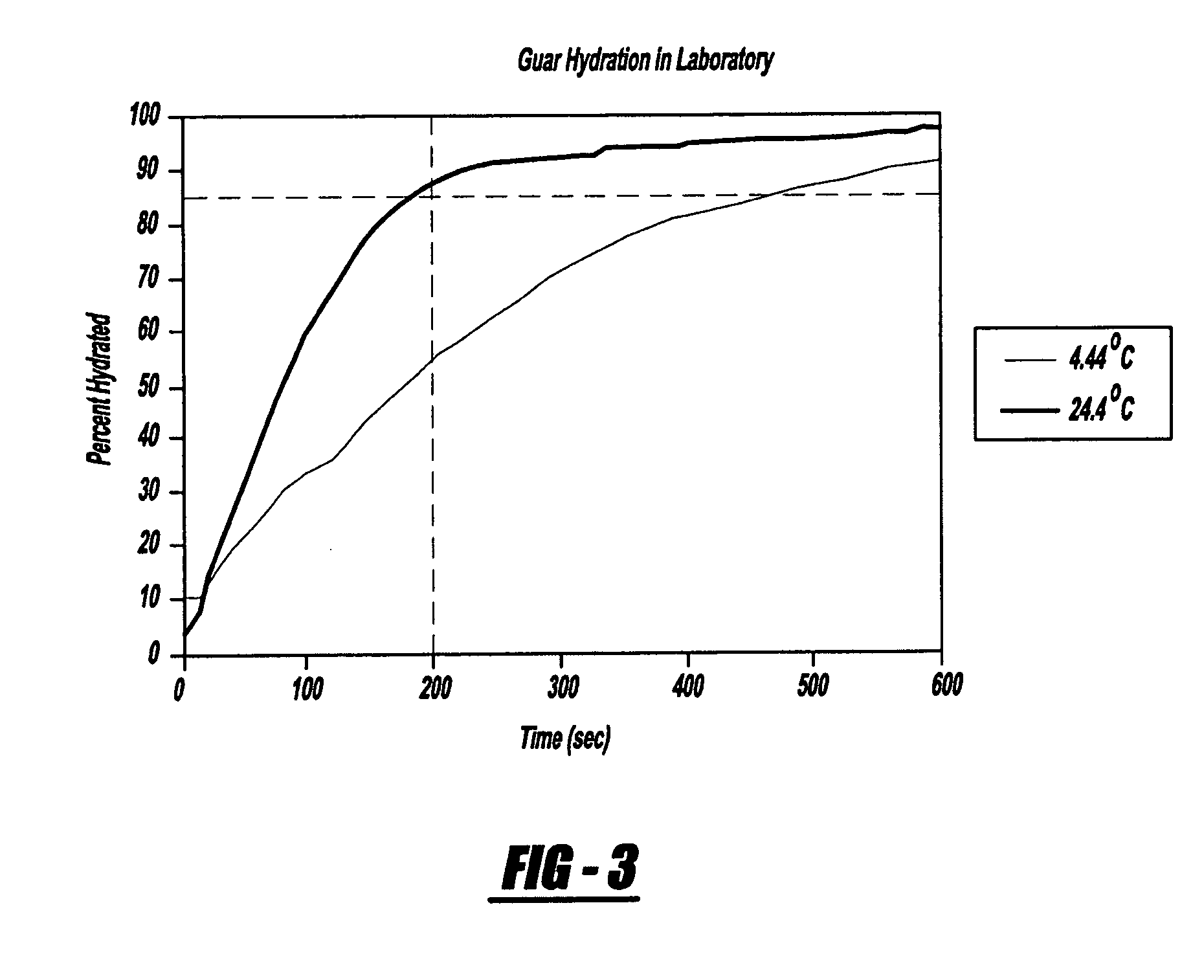Method and composition of preparing polymeric fracturing fluids
a technology of polymeric fracturing fluid and composition, which is applied in the direction of sealing/packing, drilling pipes, and well accessories, etc., can solve the problems of reducing the efficiency of the fracturing process and the high cost of the batch process, so as to stimulate oil production, reduce equipment size, and increase the viscosity of the crosslinked system
- Summary
- Abstract
- Description
- Claims
- Application Information
AI Technical Summary
Benefits of technology
Problems solved by technology
Method used
Image
Examples
example 1
[0060]From a laboratory study, shown for illustration in FIG. 3, it is determined that it takes 190 seconds to reach 85% hydration at 76° for a solution of guar gum in water. The solution contains 30 pounds guar gum per 1000 gallons and is about 0.36% wt of guar gum. A level of 85% hydration is achieved when the viscosity reaches 18.5 cP (18.5 mPa·sec), measured at a shear rate of 511 sec−1. The same curve shows that 50% is attained in only 80 seconds. A first in / first out system sized for 50% hydration is one that achieves a residence time of 80 seconds. A hydratable polymer is mixed in a first in / first out system sized to 50% hydration, achieving a residence time of 80 seconds. After hydration to 50%, boron crosslinking is activated. Immediately after activation of crosslinking the fluid is pumped down a wellbore where it reaches its final crosslinked viscosity before reaching the perforations. Because the time to 50% hydration is less than half of the time to 85% hydration, the h...
example 2
[0061]Referring again to FIG. 3, at 200 seconds, which is the residence time of a typical 250 barrel unit at a flow rate of 70 barrels per minute, the polymer achieves a hydration degree of 87% at a temperature of 76° F. (24.4° C.). At 40° F. (4.44° C.), a degree of hydration of 56% is achieved. At the well site, a solution of guar gum and water (0.36% by weight of guar gum in water) is mixed at 40° F. (4.44° C.) and passed through a first in / first out system sized at 250 barrels. Upon exit from the mixing unit, the polymer is 56% hydrated. Boron crosslinking is then activated and the crosslinked fracturing fluid injected down the wellbore. Even though the fluid is crosslinked when it is only 56% hydrated, full crosslinked viscosity continues to develop during the time the fluid is injected into the wellbore and before it reaches the perforations. The time and expense of heating the water above 4° C. is avoided.
PUM
| Property | Measurement | Unit |
|---|---|---|
| volume | aaaaa | aaaaa |
| volume | aaaaa | aaaaa |
| weight | aaaaa | aaaaa |
Abstract
Description
Claims
Application Information
 Login to View More
Login to View More - R&D
- Intellectual Property
- Life Sciences
- Materials
- Tech Scout
- Unparalleled Data Quality
- Higher Quality Content
- 60% Fewer Hallucinations
Browse by: Latest US Patents, China's latest patents, Technical Efficacy Thesaurus, Application Domain, Technology Topic, Popular Technical Reports.
© 2025 PatSnap. All rights reserved.Legal|Privacy policy|Modern Slavery Act Transparency Statement|Sitemap|About US| Contact US: help@patsnap.com



